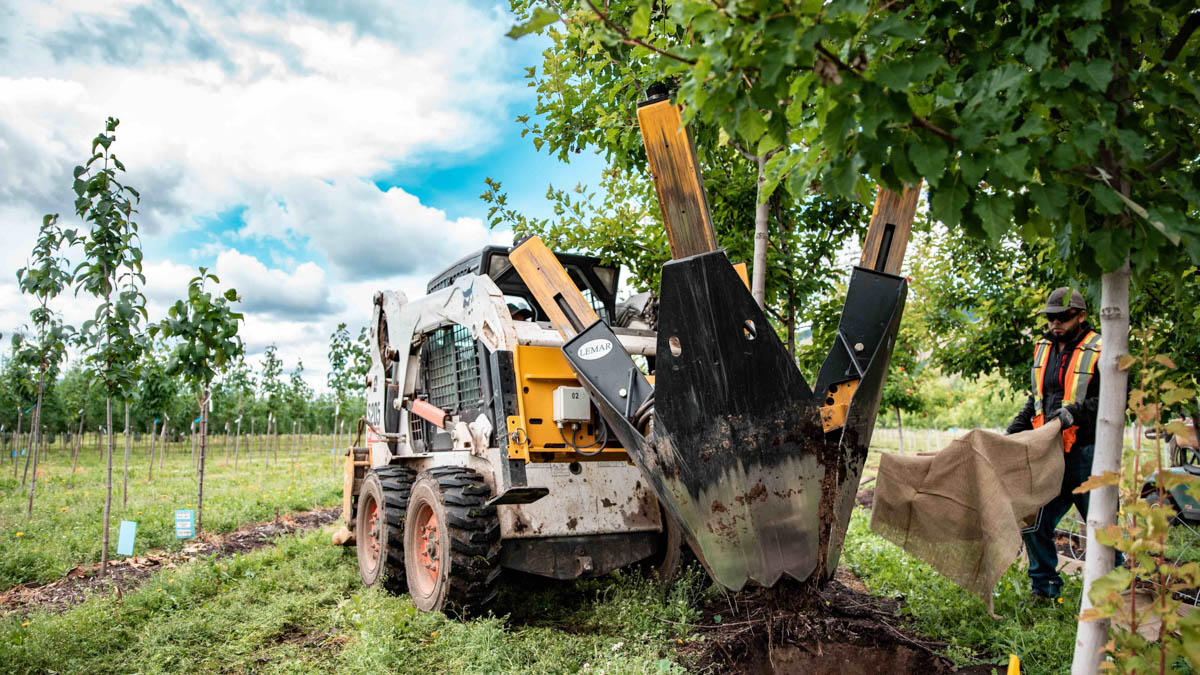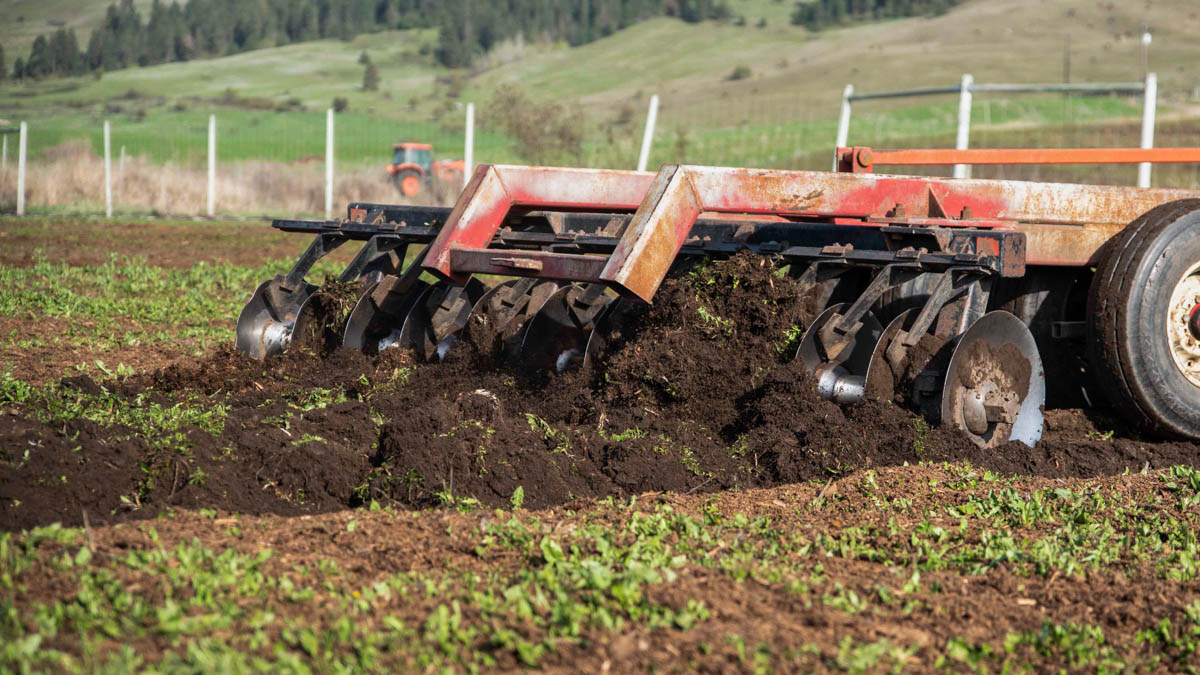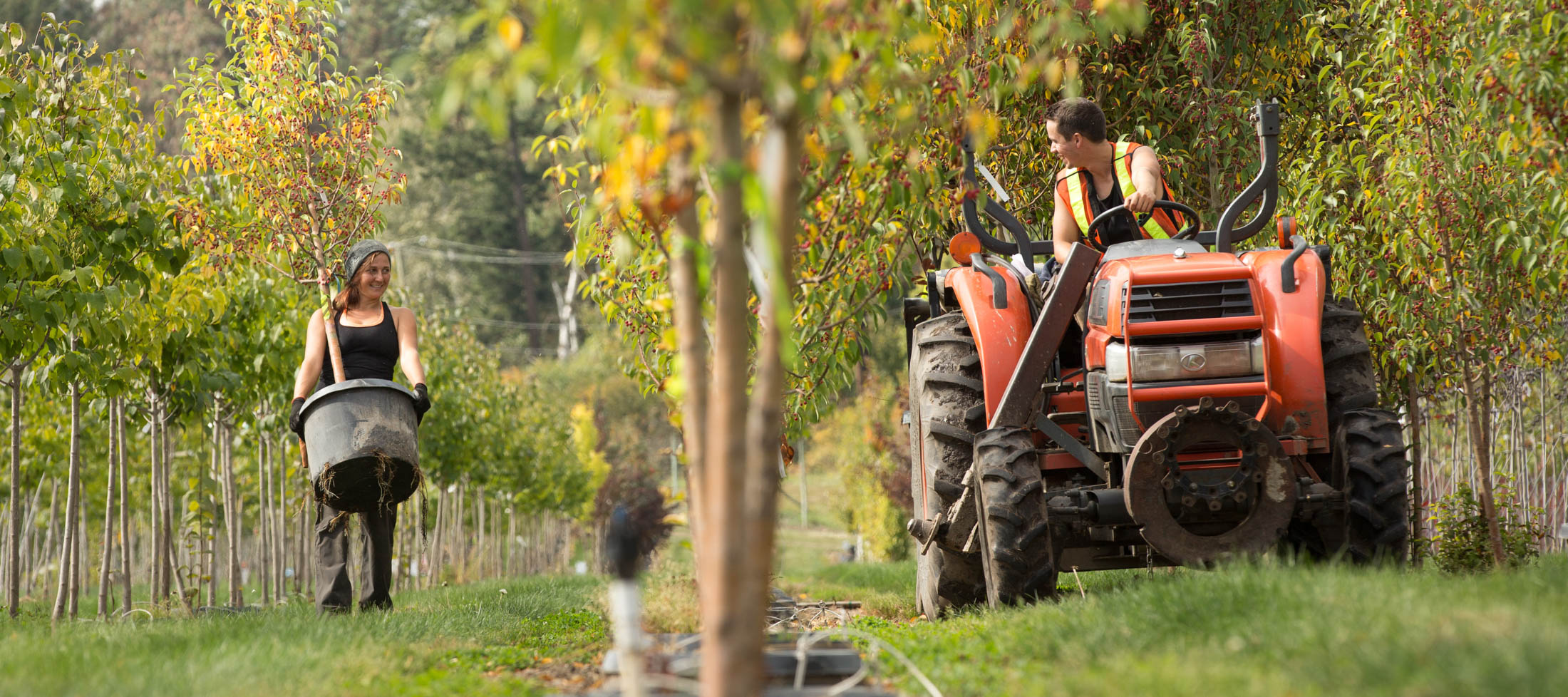INSPIRED BY NATURE. ROOTED IN SCIENCE. GROWING EVERYDAY.
Our Story
The Beginning of a Great Adventure
From Humble Roots to Innovative Farming
Many hours were spent researching farming strategies and potential crops. And so it was that in 2002, management found themselves on a plane to the USA visiting – you guessed it it – tree nurseries in Oregon. They returned to BC inspired and motivated to go big or go home. Over the next few years 26,000 conifers and 40,000 Autumn Blaze Maples were planted.

In our early years, our goals were aesthetic and profit oriented – important parts of a successful business. But these goals didn’t give us much direction for moving forwards. Over the last 20 years our goals have changed and our definition of stewarding the land has evolved.
Mistakes/Wins
Change on the Horizon
Learning from our Mistakes
One of our early examples of this change is our Summer Digging Program. In the tree industry, customers commonly face the issue of a gaping hole in tree supply from late June to early September when it is considered “too hot to dig”. Rather than seeing this as a limitation, the team at PSN decided to put our heads together and develop a way to offer freshly dug trees throughout the entire season.

Mistake
Win
Now we dig & ship up to 40% of our loads in Summer!
Our attempts to fix the problem weren’t working but instead of giving up, management encouraged the team to continue trials and innovation. We found ourselves immersed in the world of regenerative agriculture. Not only did this help us successfully develop a Summer Digging Program but we tapped into resources that changed the trajectory of the company.
Our Growing Practices
Pivot Point
Above Ground to Below Ground
We started looking at the roots and soil and examining how a tree interacts holistically with its growing environment.
This marked a foundational pivot in our plant health programs – cementing our path towards regenerative agriculture.

JOHN KEMPF – Founder | Advancing Eco Agriculture
Our Commitment to Plant Health
And How it Gave Us the Clarity We Needed
Thinking outside the box ultimately guided the company to embrace and adopt a new plant health philosophy.
As a testament of our commitment to this new path forward, in 2019 the Integrated Pest Management department was renamed “Plant Health”. With the name “Plant Health”, we are committing to spending less time managing insects and diseases with chemicals and more time growing healthy plants that are pest and disease resistant.

We do this by interpreting leaf samples and plant available nutrient soil testing – these tests tell us what the plant and soil actually need for top performance.
Our long term philosophy for our Plant Health Department is a science-based methodology that mimics nature.
By energizing plants through soil mineralization and increasing photosynthesis, plants are largely able to take care of themselves. Thus minimizing our need for chemicals.
Win
Win
Our Plant Health Philosophy
What's next for Purple Springs?
And how you can get involved
So what’s next for Purple Springs? We’ve got a few ideas including growing turf and garlic and strategically planning our cover crop rotations – as Gabe Brown (Author of Dirt to Soil) says, “Always have the land covered in plants – it acts as an amour for the soil.”
What we’d really love is to hear from YOU! We invite you to engage in the journey. There is immense strength in sharing resources and collaboration is something we not only encourage but are actively seeking.
Reach out to one of our team members or better yet, come visit the nursery!
Interested in working together? Get in touch with one of our team members. Book a tour today!
